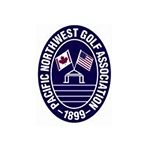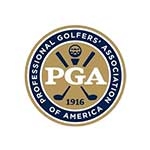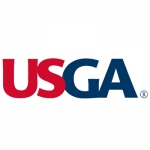Rule of the Month: Get Out of Jail Free. Sometimes.
By Sr. Rules Officials: Pete Scholz and Terry McEvilly
Click Here for the Rule of the Month Archive
2021 Correcting Errors — Before a Stroke is Made
Last month’s article focused on certain situations that require a player to correct an error after making a stroke at a ball. To name just a few, wrong ball or serious breach of playing from a wrong place are both errors that a player must correct before making a stroke to start another hole.
This month our focus is correcting errors before the player makes a stroke at the ball. Rule 14.5, which allows the correction of certain errors, is truly a “get out of jail” card for the player. However, correcting an error when not required to will complicate matters and add penalty strokes to your score.
Test your knowledge regarding correcting errors before a stroke is made with the following questions and answers.
Questions: True / False
- After lifting a ball from the putting green, the player replaces it with a different ball and lifts the ball-marker. To correct this error before putting, the player must remark the location of the substituted ball and replace it with the original ball.
- Unable to find the original ball in a penalty area, the player estimates where she thinks the ball last crossed the edge of the penalty area and properly drops another ball in the lateral relief area. At this point the original ball is found in the penalty area and this changes where she thinks the reference point for taking relief is. She has put a ball into play properly and must play the dropped ball where it lies.
- The original ball lies on a cart path. The player leaves the ball on the path and properly drops another ball in the relief area. Another player in the group informs the player that they must use the original ball when taking relief for an abnormal course condition. The player lifts the dropped ball and drops the original ball into the relief area. He has proceeded correctly.
- A player drops a ball from shoulder height when taking relief and the ball comes to rest in the relief area. To correct this error, the player must use the same ball and drop it from knee height.
- After dropping twice in a relief area, both times the ball comes to rest outside the relief area. The player drops a third time and the ball comes to rest in the relief area. Another player informs her that she must place the ball after two proper drops. She abandons the dropped ball and places another ball where the second dropped ball first hit the ground. She has proceeded correctly.
- A player accidentally kicks his ball a few inches in the general area. He sets down another ball on the spot where the original ball was before he moved it. He incurs a one stroke penalty for causing his ball to move and is allowed to substitute another ball when replacing.
- Thinking that the relief area for cart path relief is two club-lengths from the reference point, the player leaves the original ball on the path and drops a new ball almost two club-lengths from the reference point. Because the ball was dropped in a wrong place, the player may lift the dropped ball and drop another ball in the proper relief area.
- After properly dropping a ball to take relief from a penalty area, the original ball is found in the penalty area within the three minute search period. The player may play the dropped ball or abandon it and play the original ball.
- A player’s second stroke from the fairway is offline and headed toward a penalty area. The player is unable to find the ball and without knowledge or virtual certainty that the ball is in the penalty area, she drops another ball within two club-lengths of where she assumes the ball last crossed the edge of the penalty area. To correct this error, she must abandoned the dropped ball and may proceed with the original ball if it is found within the three minutes allowed for the search or proceed under the stroke and distance option for a lost ball.
- Every error associated with dropping, placing, replacing and improper substituting a ball may be corrected without penalty provided a stroke has not been made at the ball.
Answers:
- True. Rules 14.5a, 13.1b and 9.4a. When lifting a ball from the putting green, the original ball must be replaced on the spot it was lifted from. Substitution of another ball is not allowed, with a few exceptions. To correct this error, the player must mark the spot of the substituted ball and replace the original ball on the spot.
- False. Rule 17 and Interpretation 17.1d(3)/2. When a player uses reasonable judgement to determine a reference point, that determination will be accepted even if it turns out to be incorrect. However, since a stroke has not been made at the dropped ball, the error must be corrected using the new location of where the ball crossed the edge of the penalty area as the reference point. The player may use any option for relief under Rule 17 but is not allowed to play the original ball.
- False. Rules 16.1 and 14.3. In this situation, there was no error that needed correcting. When taking relief from an abnormal course condition, the player may substitute a ball or use the original. By lifting the dropped ball, the player incurs one penalty stroke for moving his ball in play and must replace it before making a stroke. Failure to do so earns the player the general penalty.
- False. Rule 14.3. Part of this question is true, in that the ball has been dropped improperly and must be dropped from knee height. However, under the Rules, every time a player drops a ball in a relief area, a different ball may be used.
- True. Rule 14.3. When a player proceeds under a relief Rule and begins the “drop, drop, place” procedure, there is no requirement that the same ball is used for the entire procedure. Therefore, each drop and the final placement of the ball may be done with three different balls.
- False. Rules 9.4a and 14.2a. Replacing a ball is very different than placing a ball. Rules that require a player to replace the ball also require that the original ball be used. There are a few exceptions in Rule 14.2a when another ball may be substituted. For example, if the original ball is not recoverable using reasonable effort and in a few seconds.
- True. Rules 16.1b and 14.5. A player may use a different ball for every drop made. In this situation, the player dropped in a wrong place and to avoid any penalty must drop a ball correctly into the relief area. There are a few exceptions, but generally, when a ball is dropped in a relief area, it must hit the relief area, come to rest and be played from the relief area. It is important to note that since the player put a ball into play, albeit in a wrong place, the player is not allowed to abandon the relief procedure and is prohibited from playing the original ball from the path.
- False. Rule 17.1c. The player properly proceeded under Rule 17 for relief. And since a ball was dropped with the intent that it be in play, the original ball is out of play and must not be played.
- True. Rules 17.1, 14.5b(1) and 18.2a. This player may not use the procedure for relief from a penalty area unless she has knowledge or is virtually certain that her ball is lost inside the penalty area. She has proceeded under a Rule that does not apply to her situation and to correct the error she must abandon the dropped ball and may use any Rule that applies to her situation. This includes playing the original ball if found within the three minutes allowed for the search, or if the ball isn’t found she must play under the stroke and distance option by returning to the spot of her previous stroke and drop a ball in the relief area under Rule 18.2a
- True. Rule 14.5a. This is the best Rule in the whole book. When a player has substituted another ball for the original ball when not allowed to under the Rules, or the player’s ball in play was replaced, dropped or placed (1) in a wrong place or came to rest in a wrong place, (2) in a wrong way or (3) using a procedure that did not apply: The player may lift the ball without penalty and correct the mistake. But this is allowed only before the ball is played.








